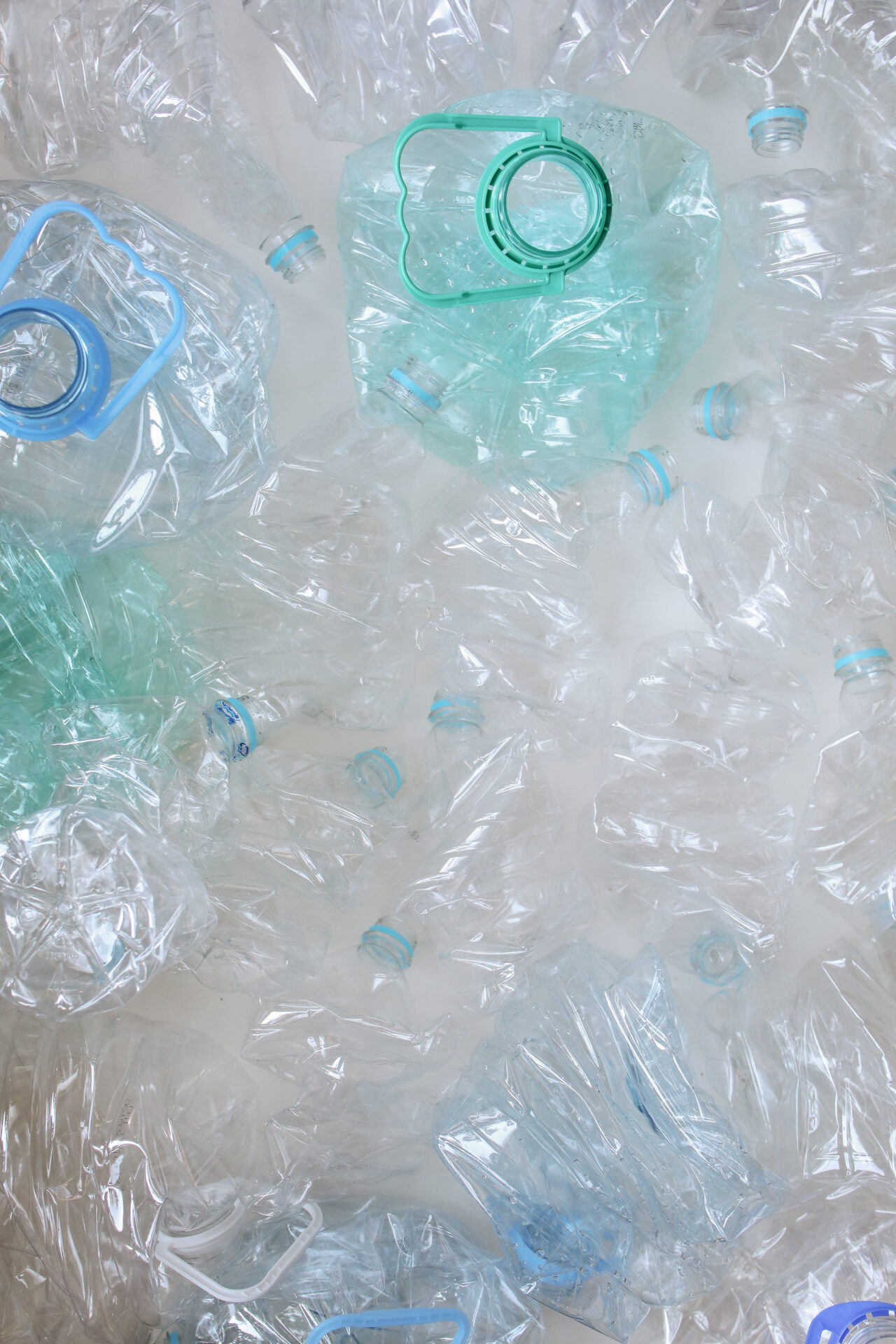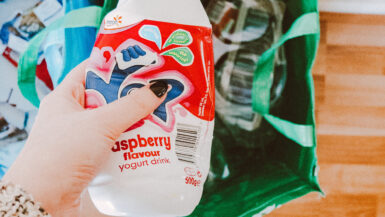In today’s rapidly evolving world, the convergence of Plastic-Free Living and the Circular Economy is becoming increasingly essential to mitigate the harmful effects of plastic pollution on our environment. This article delves into the intricacies of this eco-friendly connection by examining the core principles of Plastic-Free Living and the significance of the Circular Economy in promoting a sustainable lifestyle. Through a comprehensive analysis, we aim to provide our readers with valuable insights into the potential synergies of these two progressive concepts, thereby encouraging a collective effort towards a greener and healthier future for our planet.
The Growing Need for Plastic-Free Living in a Sustainable World
In an era marked by growing environmental concerns and the urgent need for sustainability, it has become increasingly evident that a shift towards plastic-free living is essential. Plastic pollution is wreaking havoc on our ecosystems, wildlife, and even human health. This subsection delves into the growing need for plastic-free living in a world striving for sustainability, discussing the impact of plastic pollution, the benefits of reducing plastic usage, and the role of individual and collective action in making a tangible difference.
Plastic Pollution: An Environmental and Health Crisis
The adverse effects of plastic pollution on the environment are alarming. From the Great Pacific Garbage Patch – a colossal floating mass of plastic debris – to microplastics found even in the most remote regions, plastic waste has infiltrated every corner of our planet. This pervasive pollution not only causes severe damage to marine life and ecosystems, but also poses significant risks to human health. As microplastics enter the food chain, they can accumulate in our bodies, potentially leading to adverse health outcomes.
Reaping the Benefits of Reduced Plastic Consumption
Embracing a plastic-free lifestyle offers numerous benefits, both for the environment and individuals. By reducing our reliance on single-use plastics, we can significantly decrease the amount of waste generated, conserve natural resources, and reduce greenhouse gas emissions. Moreover, opting for plastic-free alternatives often means choosing healthier, more sustainable options, such as reusable bags or glass containers, which can contribute to overall well-being.
Individual and Collective Action: A Powerful Force for Change
While the scale of plastic pollution might seem overwhelming, the power of individual and collective action should not be underestimated. Every small step towards plastic-free living contributes to the bigger picture of a more sustainable world. From adopting reusable products to supporting plastic-free businesses and advocating for better policies, each decision has the potential to make a lasting impact. By working together, we can build a cleaner, greener, and more sustainable future for all.
Ultimately, the pursuit of plastic-free living is not only essential for the health of our planet but also for our own well-being. By understanding the detrimental effects of plastic pollution and making conscious choices to reduce our consumption, we can contribute to a more sustainable world, ensuring a brighter future for generations to come.
Circular Economy Principles and Their Role in Reducing Plastic Waste
The Circular Economy is a sustainable economic model that seeks to minimize waste and promote resource efficiency by keeping materials and products in use for as long as possible. This innovative approach has the potential to significantly reduce plastic waste and contribute to a plastic-free lifestyle. In this subsection, we will explore the core principles of the Circular Economy and how they can be applied to curb plastic pollution, while fostering a more sustainable future.
Designing Out Waste and Pollution
A key principle of the Circular Economy is to design products and systems in a way that minimizes waste and pollution from the outset. This involves creating plastic-free or biodegradable alternatives, as well as focusing on durability, modularity, and recyclability. By rethinking the design of everyday products, we can substantially reduce the amount of plastic that ends up in landfills or polluting our natural environment.
Keeping Products and Materials in Use
The Circular Economy emphasizes the importance of preserving the value of products and materials by keeping them in use for as long as possible. This can be achieved through strategies such as repair, refurbishment, remanufacturing, and recycling. By prolonging the life of products and materials, we can decrease the demand for new plastic production and reduce the overall plastic waste generated.
Regenerating Natural Systems
Another vital aspect of the Circular Economy is the regeneration of natural systems. This principle encourages the use of renewable resources, while also promoting practices that restore and replenish ecosystems. By embracing this approach, we can mitigate the negative impacts of plastic pollution on the environment and support the long-term health of our planet.
Collaboration for a Common Goal
The successful implementation of Circular Economy principles requires collaboration between various stakeholders, including businesses, governments, and consumers. By working together towards a common goal, we can accelerate the transition to a more sustainable, plastic-free world. This may involve implementing policies that incentivize circular practices or supporting businesses that prioritize sustainable solutions.
In essence, the Circular Economy provides a holistic framework that can help guide our efforts towards reducing plastic waste and embracing plastic-free living. By focusing on designing out waste, extending the life of products and materials, and regenerating natural systems, we can work collectively to build a more sustainable future.
Zero-Waste Lifestyle: Practical Tips for Reducing Plastic Consumption
Adopting a zero-waste lifestyle is an effective way to minimize plastic consumption and contribute to the Circular Economy. This approach focuses on reducing waste generation, reusing items whenever possible, and recycling or composting what remains. In this subsection, we present a variety of practical tips that can help you reduce your plastic consumption while embracing a zero-waste lifestyle.
Begin with a Plastic Audit and Set Realistic Goals
The first step in reducing plastic consumption is to assess your current usage. Conduct a plastic audit by keeping track of the plastic items you use and discard over a specific period. This will help you identify areas where you can make improvements. Set realistic goals for reducing your plastic consumption, and hold yourself accountable by periodically reassessing your progress.
Invest in Reusable and Eco-Friendly Products
One of the most effective ways to reduce plastic waste is to replace single-use items with reusable alternatives. Invest in eco-friendly products such as reusable shopping bags, water bottles, coffee cups, and food containers. Additionally, consider switching to plastic-free personal care items, such as bamboo toothbrushes and shampoo bars.
Opt for Package-Free or Minimal Packaging Options
Packaging is a significant contributor to plastic waste. Wherever possible, choose products with minimal or no packaging. Shop at local farmers’ markets or bulk food stores that offer package-free produce and dry goods. When shopping for groceries, select items with recyclable or compostable packaging, such as glass jars or cardboard boxes.
Practice Mindful Consumption and Waste Reduction
A zero-waste lifestyle involves being conscious of your purchasing and consumption habits. Before buying something, consider whether it is truly necessary or if there is a more sustainable alternative available. Additionally, try to reduce waste by using every part of a product and repurposing items whenever possible.
Support Businesses that Promote Plastic-Free Living and Circular Economy Practices
Supporting companies that prioritize plastic-free living and the Circular Economy can help create positive change on a larger scale. Choose to patronize businesses that offer reusable, recyclable, or compostable packaging, and those that incorporate circular practices in their operations.
Spread Awareness and Encourage Others to Join the Movement
As you incorporate these practices into your daily life, share your experiences and knowledge with others. Encourage friends and family members to join you in reducing plastic consumption and embracing a zero-waste lifestyle. By spreading awareness, you can help create a ripple effect that contributes to a greener, more sustainable world.
By implementing these practical tips, anyone can take steps towards reducing their plastic consumption and adopting a zero-waste lifestyle. This not only benefits the environment but also aligns with the principles of the Circular Economy. Together, we can work towards creating a more sustainable and plastic-free world for future generations.
Innovative Plastic Alternatives and Their Impact on the Circular Economy
As we strive to embrace plastic-free living and the principles of the Circular Economy, the development of innovative plastic alternatives plays a crucial role in this eco-friendly connection. These alternatives not only help reduce our dependency on traditional plastics but also contribute to the overall sustainability of our planet. In this subsection, we will explore some groundbreaking plastic alternatives and discuss their potential to positively impact the Circular Economy.
Biodegradable and Compostable Plastics: A Greener Choice
One of the most promising plastic alternatives is the development of biodegradable and compostable plastics. These materials are designed to break down naturally over time, thereby reducing the persistence of plastic waste in landfills and the environment. Made from renewable resources like starch, cellulose, or biopolymers, biodegradable plastics can play a significant role in the Circular Economy by minimizing waste and promoting the regeneration of natural systems.
Edible Packaging: Turning Waste into Food
Another fascinating development in the quest for plastic alternatives is the creation of edible packaging. Researchers and companies are exploring the potential of using food-derived materials, such as seaweed, algae, or mycelium, to create packaging that can be safely consumed or composted. This innovative approach not only helps eliminate plastic waste but also aligns with the Circular Economy’s goal of keeping materials and products in use.
Reusable Materials: Prolonging the Life of Products
The use of reusable materials is another vital aspect of plastic-free living and the Circular Economy. Materials like glass, stainless steel, and silicone can be used as sustainable alternatives to single-use plastics, as they are not only durable but also easily recyclable. By opting for reusable materials, we can extend the life of products and contribute to the reduction of plastic waste.
Recycled and Upcycled Plastic: Giving New Life to Waste
While the ultimate goal is to eliminate our reliance on plastics, recycled and upcycled plastic products can serve as a transitional solution in the journey towards plastic-free living. By repurposing existing plastic waste into new products, we can minimize the need for virgin plastic production and keep materials in use, in line with the principles of the Circular Economy.
These innovative plastic alternatives have the potential to revolutionize the way we approach waste management and resource efficiency. By incorporating these alternatives into our daily lives, we can actively contribute to the Circular Economy while embracing a plastic-free lifestyle. This synergy between plastic-free living and the Circular Economy not only benefits our environment but also paves the way for a more sustainable and eco-conscious future.
Success Stories: Companies Embracing Plastic-Free Solutions and Circular Business Models
In the pursuit of plastic-free living and the adoption of the Circular Economy, several forward-thinking companies have emerged as leaders in sustainability. These businesses have successfully integrated plastic-free solutions and circular business models into their operations, setting an inspiring example for others to follow. In this subsection, we will highlight a few notable success stories that demonstrate the power of embracing eco-friendly practices in the business world.
Loop: Revolutionizing the Packaging Industry
Loop is a pioneering company that has reimagined the traditional packaging model by offering a reusable and returnable packaging system for everyday products. Partnering with various brands, Loop provides consumers with durable containers that can be returned, cleaned, and refilled, effectively reducing plastic waste. By promoting a “zero-waste” mindset and fostering a culture of reuse, Loop showcases the potential of circular business models in combating plastic pollution.
Ecolife Recycling: Transforming Plastic Waste into Value
Ecolife Recycling is a Canadian company that focuses on turning plastic waste into valuable resources. By collecting and processing post-consumer and post-industrial plastics, Ecolife creates high-quality recycled plastic products that can be used as raw materials for various industries. This innovative approach not only diverts plastic waste from landfills but also supports the Circular Economy by reintroducing materials back into the production cycle.
Lush Cosmetics: Pioneering Package-Free Personal Care
Lush Cosmetics, a global beauty retailer, has made significant strides in promoting plastic-free living by offering a wide range of package-free and eco-friendly personal care products. From solid shampoo bars to naked skincare, Lush’s innovative formulations eliminate the need for plastic containers while still delivering high-quality results. This commitment to sustainability, coupled with their ethical sourcing practices, positions Lush as a trailblazer in the plastic-free movement.
Adidas and Parley for the Oceans: Turning Ocean Plastic into Fashion
In a groundbreaking collaboration, Adidas and Parley for the Oceans have joined forces to tackle the issue of marine plastic pollution by transforming it into high-performance sportswear. By utilizing upcycled ocean plastic waste, this partnership has created a range of eco-friendly footwear and apparel, demonstrating the potential of circular business models in promoting sustainability within the fashion industry.
These success stories serve as powerful examples of the positive impact that companies can have by embracing plastic-free solutions and circular business models. By prioritizing sustainability and innovation, these businesses are not only reducing plastic waste and promoting resource efficiency but also inspiring others to follow in their footsteps. As more companies adopt similar approaches, we can collectively work towards a greener, more sustainable future, where plastic-free living and the Circular Economy thrive in harmony.





Leave a reply